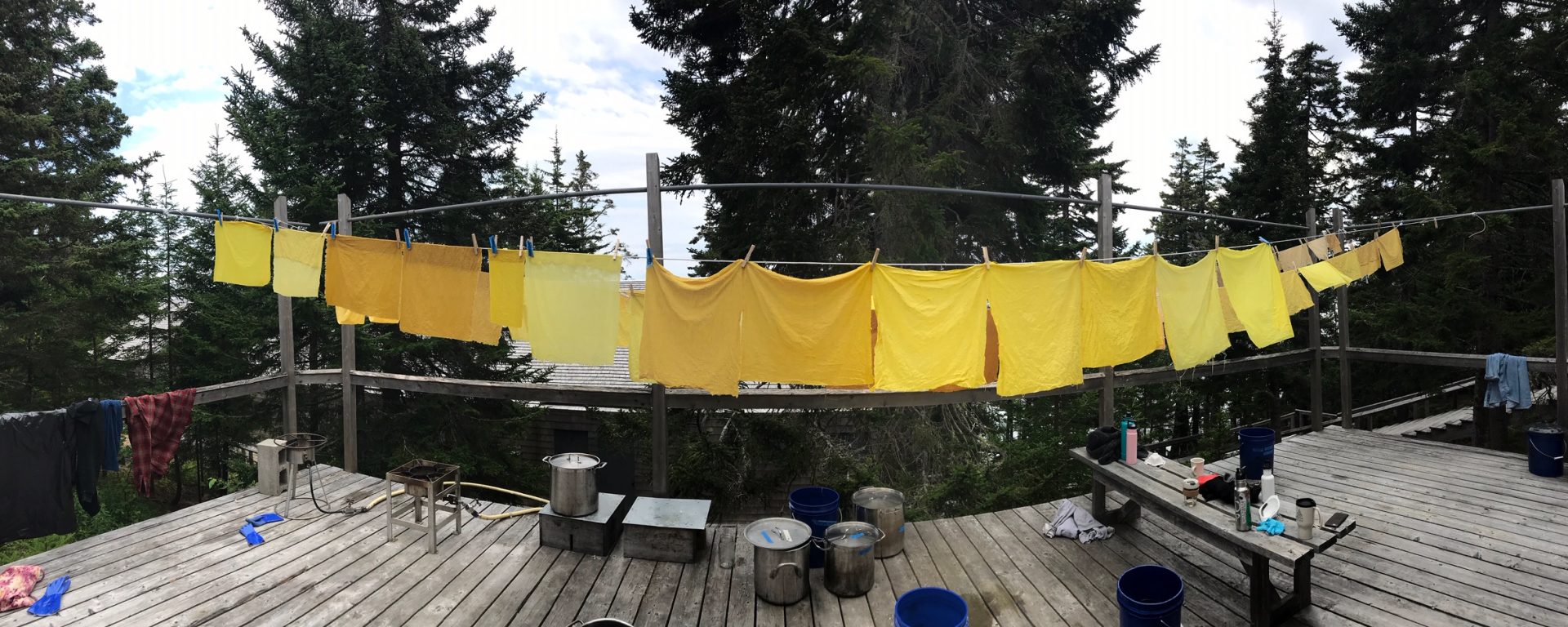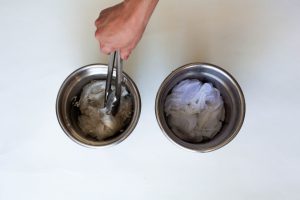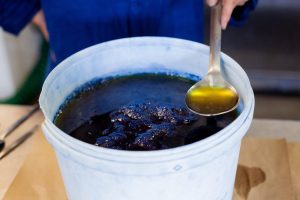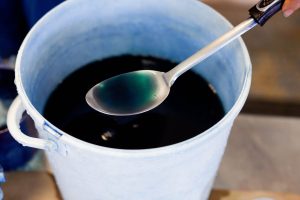There are so many terms and techniques in the natural dye space that we decided to create a natural dye glossary for you! Unless you work in a natural dye house full-time or have been doing dyeing since time immemorial, you’re not apt to know everything. We created this glossary of terms so that you can look like a plant dye master and a natural dyeing pro. Well, at least you’ll sound like it.
Check out the terms below and shoot us an email if you think we left something out and need to add it!
Natural Dye Glossary
Alkaline: An aqueous solution where the pH of the solution is higher than 7 when measured with pH paper.
Auxiliary: A general term for an ingredient that is not the dyestuff or the mordant, but is used to help change a color or enhance softness, for example.
Colorant: A term for the dyestuff or the colors the dyestuff contains
Color shifting: How to change the color of a dye by changing pH. It is also used for creating a darker shade by using iron.
Crocking: The rub off of indigo or dye onto hands or clothes.
Dye Extract: A concentrated, powdered natural dye. The natural color has been extracted, then purified, strained, dried and powdered. Other natural dyes are used as whole leaves, shredded bark, sawdust, blossoms, berries.
Eco-dyeing or eco-printing: This is the common term for laying dyestuffs directly on prepared fabric, and rolling it into a bundle so that the dyes directly print onto the surface of the fabric. This is a low-water use dye method.
Exhaust bath: In immersion dyeing, the dye is dissolved in a pot of water to create a dye bath and the fibers are put into the dye bath and are completely covered. When the fiber is finished, the remaining dye bath is called an exhaust bath and may be reused to dye additional fibers. This is a water and energy saving technique.
Layering: Indigo is considered a “layered” dye, meaning that it’s best the build the color with several dips rather than to dip once. Multiple dips are important to quality indigo dyeing and to reduce excessive dye rub off. Each dip allows more indigo to attach to the fiber, deepening the color.
Lightfastness: The resistance of color to fading.
Mordanting: Mordanting prepares the fibers to bond with natural dyes and is typically a separate immersion bath for the fibers. It is important to submerge and agitate the fibers. Many natural dyes require the use of a mordant to achieve the most durable and long lasting colors.
Over-reduced Vat. An over-reduced vat is when you have added too much reducing agent. Add air into the vat with vigorous stirring to rebalance. It’s fairly common to over-reduce a vat if using an industrial reducing agent such as thiourea dioxide (thiox) or sodium hydrosulfite (hydros) but less common when using fructose or henna.
pH: A measure of acidity or alkalinity of water soluble substances (pH stands for ‘potential of Hydrogen’). A pH value is a number from 1 to 14, with 7 as the middle (neutral) point. Values below 7 indicate acidity which increases as the number decreases, 1 being the most acidic.
What this means for the natural dyer is that you can raise pH with basic ingredients such as soda ash, calcium hydroxide or other mild bases. You can lower pH with cream of tartar, citric acid or vinegar. This allows you to have a greater range of colors as many dyestuffs create unique shades depending on the acidity or alkalinity of their dye baths.
Reducing agent: A chemical whose function is to remove excess oxygen from the indigo stock and vat. Without reduction, the indigo vat will not work properly.
Scour: A textile term for washing or cleaning fibers prior to mordanting and dyeing, often using a cleanser such as soda ash, or a soap, and near boiling water.
Skein: A continuous strand of yarn wrapped into a hank. Skein weights are based on the size of the yarn and the weight of the yarn. A typical skein’s weights is 100 grams or 4 ounces.
Tannins: Tannins are substances of vegetable origin that include leaves, bark, roots, fruits and are typically astringent or bitter to taste. When combined with iron, they create a blue-black color, and when used in mordanting cellulose fibers, they increase lightfastness and color yield.
Under-reduced Vat: An under-reduced vat is blue. If the vat is turning teal or blue-colored, add more reducing agent and wait until the vat balances, clears and turns yellow-green or golden brown. If it doesn’t balance within 30 minutes, check the pH.
Vat vs stock solution: This is in reference to indigo. An indigo vat is the large container that you dip into. Indigo stock solution is the concentrated liquid that you create that is then stirred and put into the vat, then allowed to balance before beginning to dip.
Washfastness: The resistance of dyed color to washout when laundering.
Weight of fiber: The dry weight of whatever one is dyeing.







